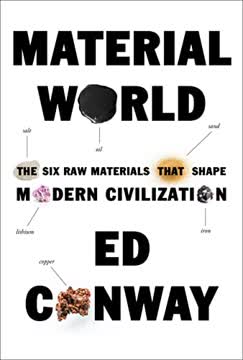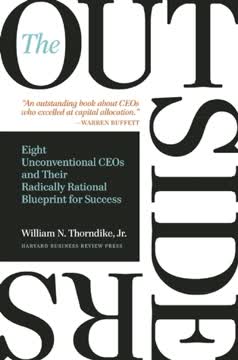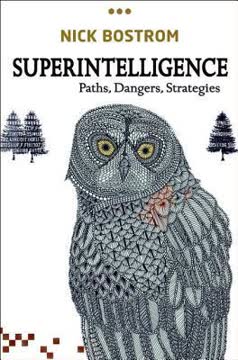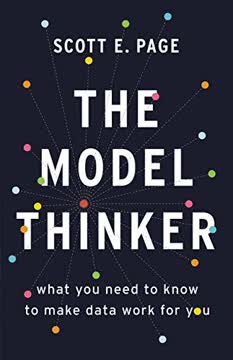Key Takeaways
1. Framing: The Power of Mental Models in Decision-Making
The source of human power is neither muscle nor mind but models
Frames shape perception. Mental models, or frames, are the foundation of human thought and decision-making. They help us understand the world, predict outcomes, and make sense of complex situations. Frames act as cognitive filters, highlighting essential information while disregarding the rest. This cognitive shortcut allows us to efficiently process information and make decisions.
Frames influence action. The frames we employ affect the options we see, the decisions we make, and the results we attain. For example, when Regina Barzilay and her team at MIT reframed the search for new antibiotics from a biological problem to an informational one, they discovered a powerful new drug using AI. This demonstrates how changing our mental model can lead to breakthrough solutions.
Frames are ubiquitous. We use mental models constantly, even if we're not aware of them. They infuse everything from personal decisions to societal structures:
- In business: Lean manufacturing, OKR (Objectives and Key Results)
- In politics: Democracy, monarchism
- In philosophy: Secular humanism, religious worldviews
- In law: Rule of law, "might makes right"
- In social issues: Racial equality, racism
2. Causality: Understanding the World Through Cause and Effect
We are causal-inference engines and often wrong, but this is good
Causality is foundational. Humans are naturally inclined to see the world through the lens of cause and effect. This causal reasoning is the basis of our cognition, allowing us to predict outcomes and make decisions. From early childhood, we develop an understanding of causality that shapes our interactions with the world.
Causal templates enable learning. Unlike animals that focus on directly observable causal links, humans can create abstract causal templates. This ability allows us to:
- Generalize from specific experiences
- Apply knowledge to new situations
- Learn more efficiently
- Make predictions about unobserved phenomena
Explainability matters. Our drive to understand causality leads us to create explanations, even when we lack complete information. This was evident in the case of Ignaz Semmelweis, who correctly identified handwashing as a way to prevent puerperal fever, but struggled to explain why it worked. The importance of explainability highlights why some frames catch on while others don't, even if they lead to correct actions.
3. Counterfactuals: Imagining Alternative Realities
Envisioning worlds that do not exist lets us excel in this one
Counterfactuals expand possibilities. The ability to imagine alternative realities is a uniquely human trait. It allows us to:
- Consider "what if" scenarios
- Evaluate potential outcomes
- Make better decisions in the present
Pretend play builds skills. Children engage in counterfactual thinking through pretend play, which helps develop their ability to reason about hypothetical situations. This cognitive skill is crucial for problem-solving and innovation in adulthood.
Simulations enhance learning. Various fields use counterfactual thinking to improve performance:
- Business schools use case studies to expose students to diverse scenarios
- Athletes engage in "film study" to analyze game situations
- Medical professionals use simulations to practice procedures
- Computer scientists create virtual environments like Waymo's Carcraft to train self-driving cars
By mentally rehearsing different scenarios, we can prepare for a wide range of possible outcomes and make more informed decisions.
4. Constraints: Limiting Imagination for Practical Solutions
Our vision needs to be bounded to be effective
Constraints focus creativity. While imagination is powerful, it needs boundaries to be effective. Constraints help channel our thinking towards practical solutions. Examples include:
- Dr. Seuss writing "Green Eggs and Ham" using only 50 unique words
- Architect Frank Gehry viewing constraints as opportunities for creativity
- The Wright brothers' innovative airplane design working within physical limitations
Balancing constraints is key. When applying constraints to our thinking, we should consider:
- Mutability: Focus on elements that can be changed
- Minimal change: Start with small modifications before considering larger ones
- Consistency: Ensure changes don't contradict underlying assumptions
External models help. Sometimes, it's useful to create physical or digital models to embody constraints:
- Architects use scale models
- Surgeons practice on anatomically accurate mannequins
- Military planners use mock-ups for training (e.g., the Entebbe raid)
These external representations help us adhere to necessary limitations while exploring possible solutions.
5. Reframing: Switching Perspectives for Better Outcomes
Occasionally we need to switch frames or invent new ones
Reframing unlocks new solutions. Sometimes, the mental model we're using isn't suitable for the problem at hand. Reframing involves switching to a different perspective, which can reveal new options and lead to better outcomes. This can be done in three ways:
- Repertoire: Choosing a different frame from ones we already know
- Repurposing: Adapting a frame from another context
- Reinvention: Creating an entirely new frame
Successful reframers think differently. People who excel at reframing share certain traits:
- Willingness to take cognitive risks
- Comfort with the unfamiliar
- Ability to let go of preconceptions
- Capacity to see and seize new possibilities
Timing matters. Recognizing when to reframe is crucial. It's necessary when:
- Circumstances have changed substantially
- Goals have evolved
- The current frame no longer produces useful options
For example, Tesla successfully reframed the concept of electric cars when battery technology improved and environmental concerns became more prominent, while traditional automakers initially resisted this change.
6. Cognitive Diversity: Embracing Multiple Frames
A wide variety of frames is crucial for progress
Diverse perspectives improve outcomes. Organizations and societies benefit from cognitive diversity – the presence of multiple mental models. This diversity:
- Increases the likelihood of finding innovative solutions
- Helps avoid groupthink
- Improves decision-making in complex situations
Strategies for cognitive diversity:
- Expand your frame repertoire
- Engage in "cognitive foraging" – seeking out new ideas and experiences
- Practice the "clean-slate" strategy – being ready to put aside familiar frames
Fostering diversity in organizations. To harness the power of cognitive diversity:
- Assemble teams with varied backgrounds and perspectives
- Encourage individual reflection before group discussions
- Create an environment that values and protects different viewpoints
Companies like Apple have institutionalized these practices, leading to more innovative and successful outcomes.
7. Frame Pluralism: Fostering Diverse Perspectives in Society
A coexistence of frames is essential to humanity's survival
Pluralism protects cognitive freedom. A society that embraces multiple frames is more resilient and adaptable. Frame pluralism:
- Allows for a wider range of problem-solving approaches
- Prepares society for unexpected challenges
- Protects against the dangers of cognitive monocultures
Strategies for promoting pluralism:
- Embrace variation: Celebrate differences in viewpoints
- Harness education: Teach respect for diverse perspectives
- Encourage migration: Mix cultures to foster new ideas
- Accept friction: View debates as opportunities for growth
Beware of bad frames. While most frames should be tolerated, those that deny the existence of other frames are dangerous. Societies must be vigilant against frames that seek to eliminate cognitive diversity.
8. Vigilance: Protecting Our Cognitive Power in the Age of AI
We must remain on guard not to cede our power
Human framing remains crucial. Despite advances in artificial intelligence, human cognitive abilities are irreplaceable. AI can process vast amounts of data, but it cannot:
- Generate causal frames
- Create counterfactuals
- Impose meaningful constraints
Agility of mind is key. To thrive in a world with AI, humans must cultivate mental flexibility. This involves:
- Continually nurturing curiosity for new perspectives
- Developing the courage to disagree and be disagreed with
- Training our minds to adapt to new situations
Embracing our cognitive heritage. As we face unprecedented challenges, from climate change to pandemics, our ability to frame and reframe problems is more important than ever. By honing our framing skills and fostering cognitive diversity, we can ensure that humanity remains at the center of problem-solving and decision-making in the age of AI.
Last updated:
FAQ
What's Framers: Human Advantage in an Age of Technology and Turmoil about?
- Human Cognition Focus: The book explores how human cognitive abilities, particularly framing, are crucial in navigating complex challenges in a technology-driven world.
- Mental Models: It emphasizes that our understanding of reality is shaped by mental models, which help us make decisions and solve problems.
- Crisis Response: The authors argue that how we frame issues like pandemics, climate change, and social unrest can determine our survival or extinction.
Why should I read Framers?
- Enhance Decision-Making Skills: The book provides insights into improving decision-making by understanding and applying different mental frames.
- Relevance to Current Issues: It addresses contemporary challenges, making it applicable to readers interested in societal issues and technological advancements.
- Empowerment through Cognition: Readers will learn how to harness their cognitive abilities to reframe problems and create innovative solutions.
What are the key takeaways of Framers?
- Framing is Fundamental: The authors assert that framing is a core aspect of human cognition that influences our perceptions and actions.
- Causality, Counterfactuals, and Constraints: The book outlines three essential elements of framing: understanding causality, envisioning counterfactuals, and applying constraints to our thinking.
- Diversity of Frames: Embracing a variety of frames is crucial for progress and survival, as it allows for multiple perspectives and solutions.
How does Framers define framing?
- Mental Models: Framing refers to the mental models we use to interpret reality, which shape our understanding and decision-making processes.
- Cognitive Shortcuts: Frames act as cognitive shortcuts that help us focus on relevant information while filtering out distractions.
- Dynamic Process: The authors emphasize that framing is not static; we can choose, change, or invent frames based on the context and goals.
What is the significance of counterfactual thinking in Framers?
- Envisioning Alternatives: Counterfactual thinking allows us to imagine "what could have been," which helps us understand the implications of our choices.
- Improving Causal Reasoning: Engaging in counterfactuals enhances our ability to reason causally, as it broadens our perspective and encourages us to consider multiple outcomes.
- Agency and Control: By imagining different scenarios, we gain a sense of agency, empowering us to make informed decisions and take action.
How do causality, counterfactuals, and constraints work together in framing according to Framers?
- Causality: Understanding cause and effect is essential for making sense of situations and predicting outcomes, forming the basis of our mental models.
- Counterfactuals: Imagining alternative scenarios allows us to explore different possibilities and outcomes, enhancing our decision-making capabilities.
- Constraints: Applying constraints helps to focus our thinking and make our counterfactuals actionable, ensuring that our mental models remain relevant and effective.
What is the clean-slate strategy mentioned in Framers?
- Radical Approach to Thinking: The clean-slate strategy involves intentionally setting aside existing mental models to create space for entirely new ideas and perspectives.
- Encourages Innovation: This approach fosters creativity by allowing individuals to think beyond familiar constraints and explore uncharted territories in problem-solving.
- Preparation for New Challenges: While it is difficult to achieve a true clean slate, training oneself to let go of preconceived notions can lead to significant breakthroughs.
How does Framers define cognitive foraging?
- Pursuit of New Ideas: Cognitive foraging refers to the active search for diverse perspectives and ideas, akin to hunting and gathering in the intellectual realm.
- Enhances Adaptability: By exposing oneself to a variety of viewpoints, individuals become better equipped to tackle challenges and innovate when needed.
- Curiosity-Driven Exploration: This concept encourages a mindset of curiosity, where individuals seek out unfamiliar experiences and knowledge to enrich their cognitive repertoire.
What role does cognitive complexity play in framing according to Framers?
- Enhanced Decision-Making: Cognitive complexity refers to the ability to understand and integrate multiple perspectives and ideas, which is crucial for effective framing.
- Leadership Trait: The book suggests that leaders with higher cognitive complexity are better equipped to foster diverse thinking within their teams, leading to improved outcomes.
- Development Through Exposure: Engaging with diverse viewpoints and challenging one's own assumptions can enhance cognitive complexity over time.
What is the paradox of tolerance as discussed in Framers?
- Limits of Tolerance: The paradox of tolerance posits that a society must be intolerant of intolerance to maintain a pluralistic environment.
- Balancing Act: The authors argue that while pluralism is essential, vigilance is required to prevent the rise of frames that seek to eliminate alternative perspectives.
- Practical Implications: This concept highlights the need for societies to navigate the tension between openness and the protection of diverse viewpoints, ensuring that harmful ideologies do not gain traction.
What are some examples of reframing in Framers?
- Mountaineering Example: Habeler and Messner reframed the approach to climbing Everest by adopting an Alpine style, emphasizing speed over traditional expedition methods.
- Economic Models: Andrew Lo suggests shifting from a physics-based frame of economics to a biological one, focusing on evolution and growth.
- Community Policing: Camden, New Jersey, reframed law enforcement by disbanding its police force and creating a new one focused on community engagement rather than control.
What are the best quotes from Framers and what do they mean?
- “Humans were the ones who selected the right compounds”: This highlights the importance of human cognition in scientific breakthroughs, emphasizing that technology alone cannot solve complex problems.
- “Our power lies in the difference of human frames”: This quote underscores the value of diverse perspectives in addressing societal challenges, advocating for pluralism in thought.
- “We must remain on guard not to cede our power”: A reminder of the need to actively engage in framing and decision-making, rather than passively accepting external narratives.
Review Summary
Framers receives mixed reviews, with an average rating of 3.56 out of 5. Many readers find it thought-provoking, offering insights into human cognitive abilities and decision-making processes. The book explores the concept of "frames" as mental models for problem-solving and innovation. Some praise its relevance to AI and business, while others criticize its repetitiveness and lack of practical applications. Several reviewers appreciate the book's emphasis on cognitive diversity and pluralism, though some find the writing style and examples lacking depth or originality.
Similar Books










Download PDF
Download EPUB
.epub digital book format is ideal for reading ebooks on phones, tablets, and e-readers.




